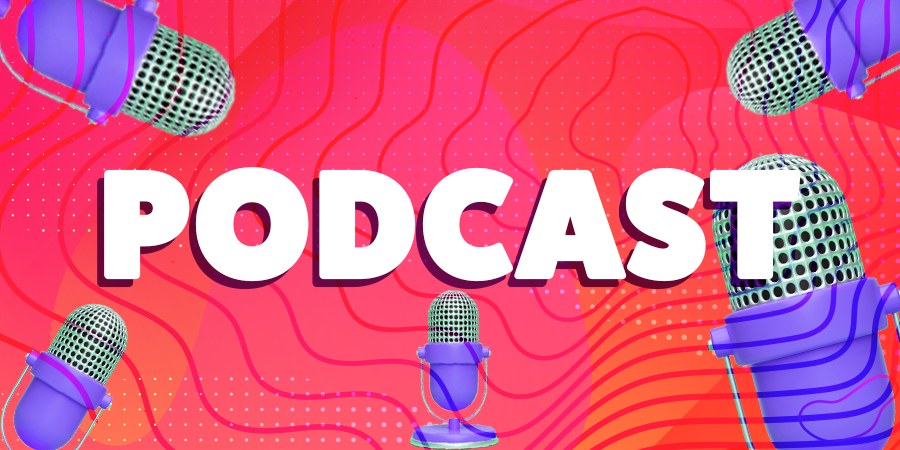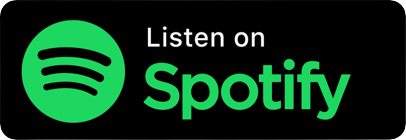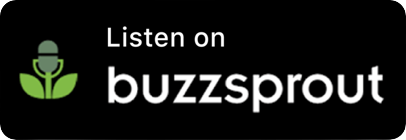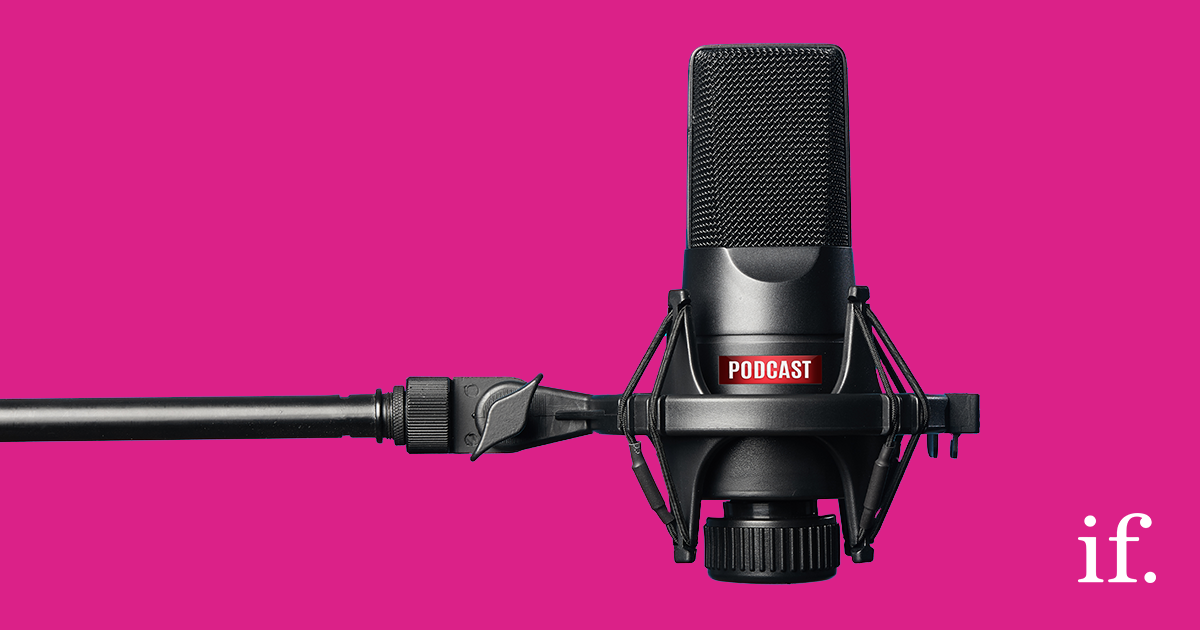Ep 37: Serious Social – Brand Personality Power
Join Belle Lawrence in this episode of Serious Social for best practice tips on tone, voice and copywriting. Discover how your brand personality online can make a lasting connecting with your audience and help you stand out amongst competitors.
If you’re after more know-how to break the social boring, subscribe now.
Full Transcript
Welcome to the Serious Social podcast, created by the straight-talking social media experts at immediate future.
Welcome to Serious Social Live – I’m Belle Lawrence and today we are talking about brand voice, tone and the copywriting tips you need to get your brand personality across effectively on social media. Feel free to ask questions in the comments – I’ve had some already which I’ll be answering as we go through.
In this session I’ll be covering these 4 points related to social media – what do we mean by brand voice, the difference between voice and tone, how to figure out what your brand personality should be, and then the copywriting tips you’ll need to convey that brand personality.
So first – what is a brand voice? Think about your favourite comedian, or the newsreader you prefer to watch – if I asked you to do an impression of them, could you do it? Maybe not an amazing one, but more than likely you’d get some of the intonation they use – does the comedian phrase everything as a question, do they punctuate their storytelling with movements or noises that are unique to them. Have you noticed that the newsreader changes the way they describe bad news versus positive news. Now these are easy to spot, because most of us can hear them – as humans with emotional intelligence, we learn early on whether our parent or teacher is using our name to call us when we’ve been good or bad!
Now try it with subtitles only – you’ll find it harder to determine the emotion in a story until you start to see key words come up – and the same thing can easily happen on social media. It’s also the reason we use exclamation points, and of course emoji’s to convey what we’re trying to say.
Just like comedians or singers, brands need to be recognised, and to do this you need to be consistent with the voice you use. Without consistency of voice, brands also run the risk of switching their audience off and on depending on the communication that’s going out – the audience then loses trust in the brand or simply doesn’t understand why what they’re seeing is relevant.
One thing that can happen as brands grow, is that their voice on social comes from whoever is writing the posts or managing the social media – if that person moves on from the brand, or even just starts to delegate, it can be really hard for them to explain how to keep posts consistent – so an exercise in reviewing and agreeing the brands voice is a really important piece of the marketing puzzle that cannot be ignored.
Ok so now we understand that brand voice and personality builds long term recognition and trust with our audience, let’s go a bit deeper and look at the difference between voice and tone.
Voice is essentially the way you describe the brand personality in adjective form – for example, it could be lively, professional, bold or factual. By setting these out, you’re describing the mission for what you want the brand to be seen as. It can reflect the following things
Culture – what makes your organisation stand out, what do you believe in or stand for?
The second is community – and this one takes more work, because you need to understand who your audience are and what their pain points are. Social listening will help you with this, look at the language and topics they are talking about so you can chime with this
And lastly, conversation – as we frequently say, brands should not be broadcasting on social, it’s supposed be a two-way street. To be social on social, you’ll need to thing about why you’re there – what can you contribute to the conversation
Now tone is a subset of your brands voice. Tone can change depending on the situation the brand is in – or in other words, the channel you’re posting on, or the audience you’re talking to. Think about how you’d explain the process of a bread dough proving to an adult versus a child – you’d change the language you use and the intonation of your voice.
So to figure out the tone you’ll be using, you need to think about these things
Content type – is it a story? A LinkedIn article or a tweet?
Who is your audience and where are they – for example, is your Twitter demographic is 18-24 but on Facebook your page followers fall more in the 25-45 parent category
What are you answering – is it a pain point, are you offering inspiration, will the post cheer the audience up for some reason
In all honesty, a lot of this should come naturally to any experienced social media manager but remember what I mentioned earlier in the session – during brand growth, this is where things can go awry if you haven’t put the time and effort in to articulating it all.
So here’s where it gets challenging – finding the time to do this work, particularly when the pressure is on to deliver, deliver, deliver, well it can seem impossible. One option is, of course, to engage with an agency like IF so we can guide you through the process.
Our approach is to workshop it – after all, you are the people inside the brand, you know the objectives and business goals!
To tease all this out, and without giving away all our secrets! Here are some ideas:
Like I mentioned – celebrities, newsreaders, artists – you could think about who your brand would be represented by – and then go further, decide WHY it would be these people. Describe them using adjectives.
Add to this list of adjectives in a brainstorm, think about all the words you’d like your audience to perceive your brand as, throw them all up on a wall and debate which are the most relevant or ‘feel’ the most like your brand.
Describe your audience and look at their conversations – in advance of a team discussion, you’ll need to do that social listening I mentioned. Distil the research down and write some key points down.
Audit what you’ve already done, and/or posts from your peer group – look at the way posts have been written, the tone or feeling you get from them and whether this is what chimes with your adjectives
This is not a quick job, I should say right now, and of course if your brand is newly established, it might take some time to get to the bottom and agree with your team!
Right, lots of that was about the “how”, and to finish the session I promised some copywriting tips and tricks, so here they are.
When you break it down, a social media post is a very, VERY short story – so there’s no reason not to structure it like this – with the formats we can access like carousels, stories and threads, we can approach posting with the “once upon a time” format
However, social attention is precious – well, that’s probably an understatement – so if you can distil it, then you should.
EDITING is your friend – all very well to include adverbs – for example “the exciting campaign exceeded expectations”, but equally, “the campaign exceeded expectations” is still a strong statement.
Use the present tense and an active voice – sticking with my example, “the campaign was really loved by the marketing director” – that’s super wordy, so make it active – e.g. “marketing director, Amy, loved the campaign”
Before you write, think about the action you want the audience to take – do you need their response, then ask a question, do you want them to share it? Figure out a way to encourage that. If you want them to click through, you’ll have to hook them in – don’t be click bait-y, but if you know your audience, you’ll know how to tease their interest.
Get emotional – drive a desire to learn or spark a positive response by being hyper relatable.
You can play on the fear of missing out by creating a sense of urgency or exclusivity in your products or events promotions.
For some channels, you’ll also need to make sure you utilise the right hashtags too, of course. And then lastly – test and learn!
Now before I wrap up, I want to mention the fantastic webinar we’ve got on Monday 23rd, where Katy Howell will be talking to Leia from Brandwatch about using social listening, and Joc Kirby from Andertons, a fantastic musicians shop which is just down the road from me about scaling your business through social, perfect for direct-to-consumer brands. All the info is on our social channels, and if you want the details then post a comment on this video, or DM us.
And that’s it for today! Thank you for tuning in, we’ll be back with best practice and tips next week, and don’t forget you can catch up on all our Serious Social episodes across our social channels or as a Podcast.
If you’re after more know-how to break the social boring, subscribe now and check out the show notes for links to our website and social profiles.




